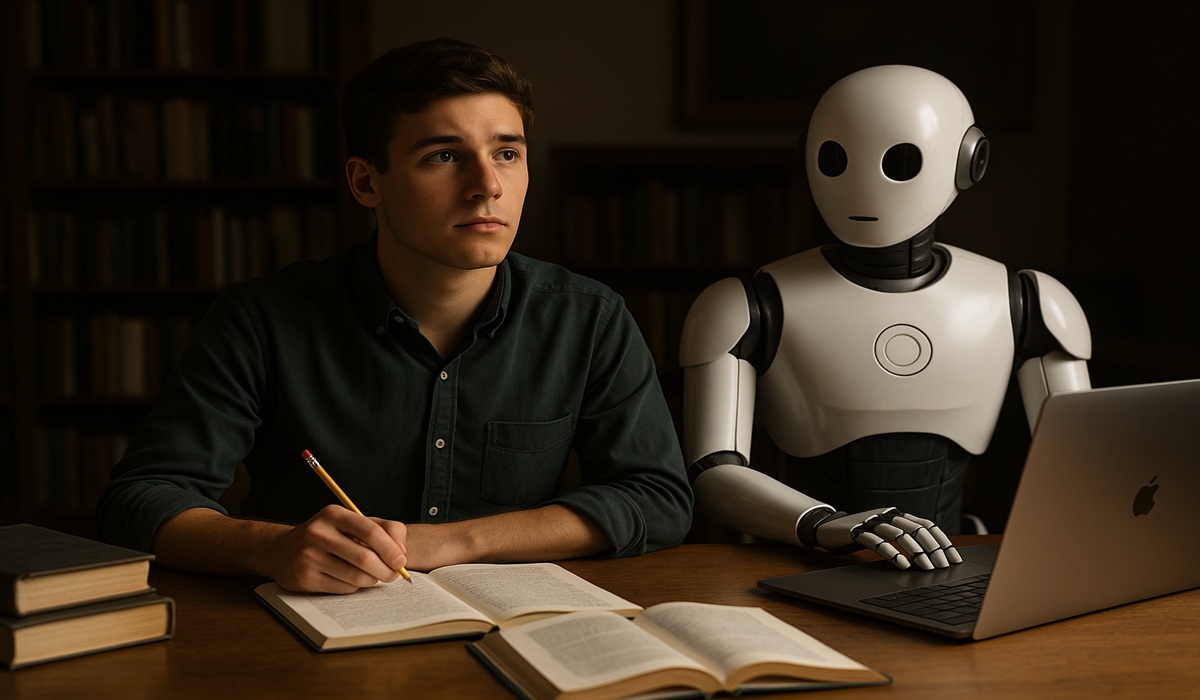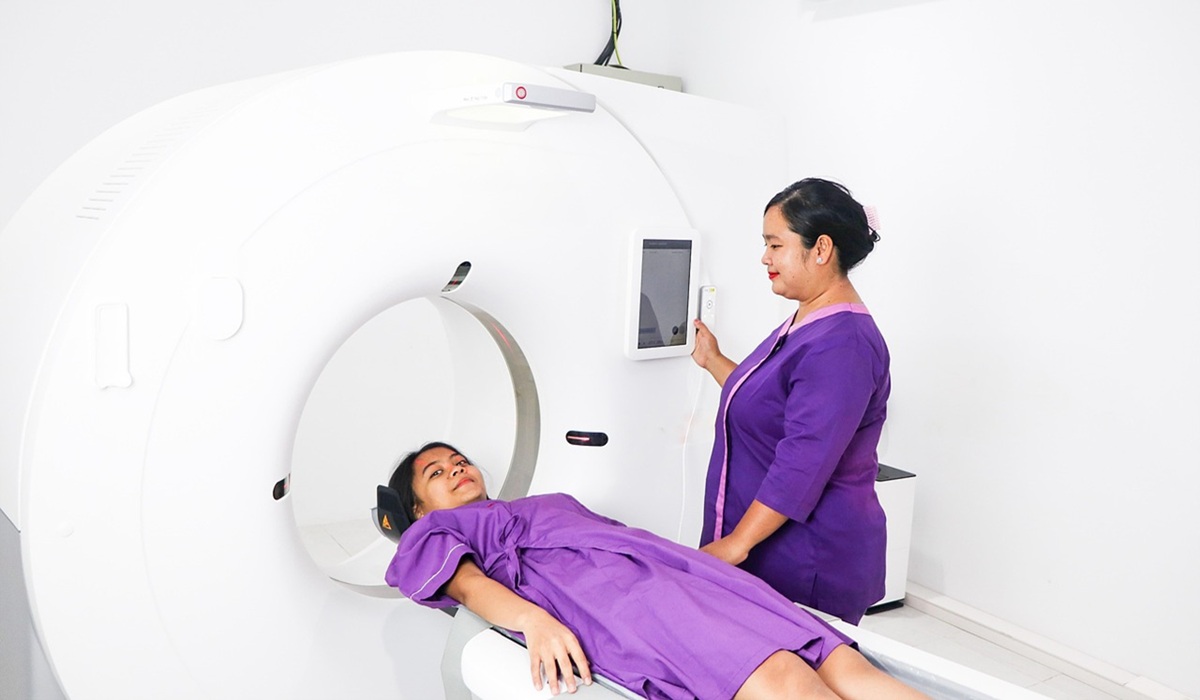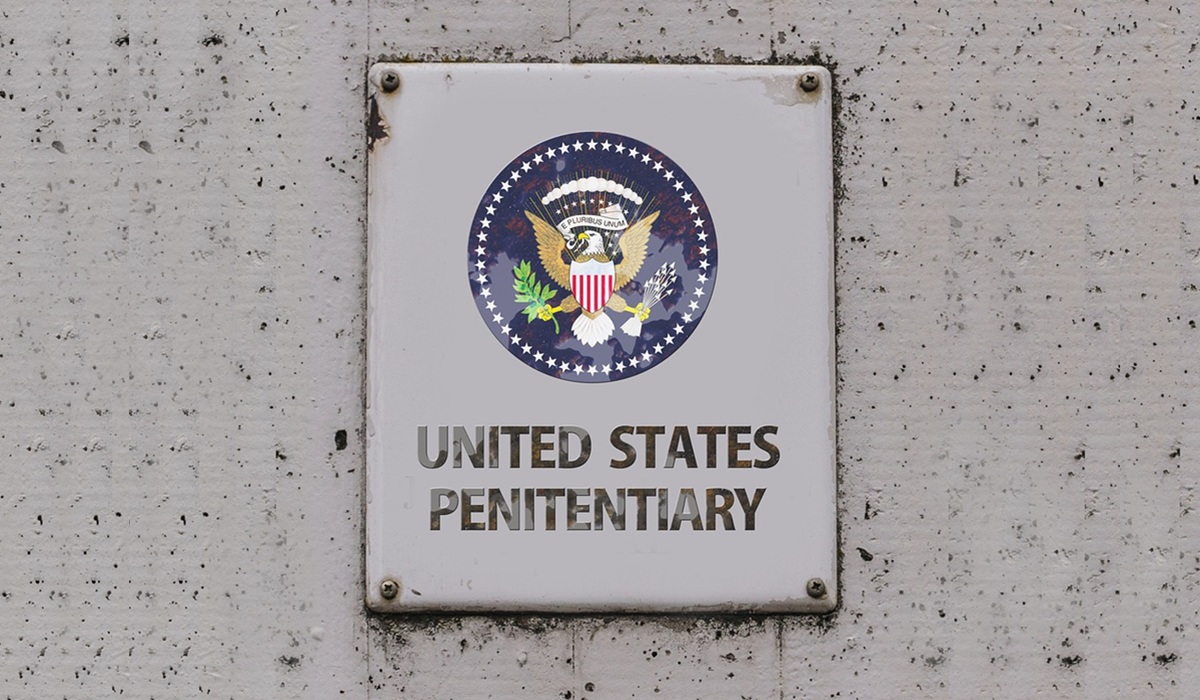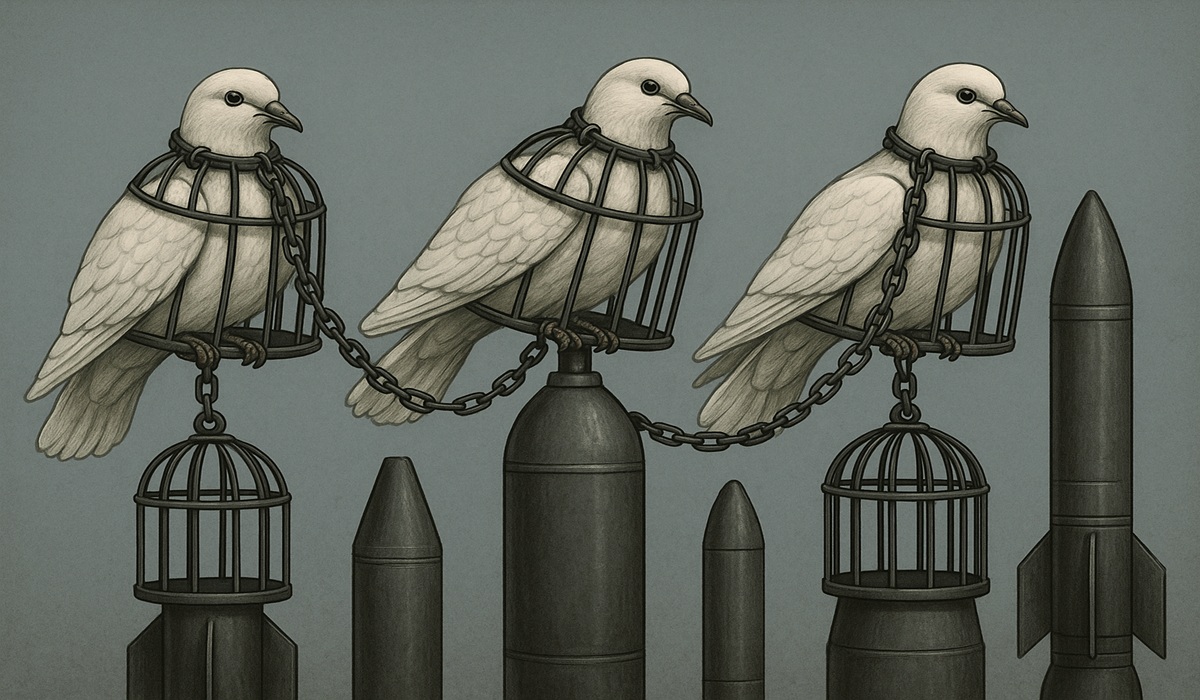The Future Is Already Here: Why AI Belongs in Classrooms and Lecture Halls
- TDS News
- Technology
- U.S.A
- October 19, 2025

By: Donovan Martin Sr, Editor in Chief
In classrooms and lecture halls across North America, a quiet rebellion is taking place. Students are using artificial intelligence to brainstorm essays, summarize research, and refine their writing — often in secret. Professors and teachers, meanwhile, are caught between suspicion and curiosity, torn between preserving academic integrity and acknowledging that the world has changed. The question that looms over every institution now is not if AI should be used in education, but how and to what extent.
There is a certain irony in the moral panic around students using AI to write essays. For years, educators have preached the virtues of efficiency, innovation, and adaptation — yet when a tool emerges that can synthesize, analyze, and articulate ideas faster than any human, the reaction has largely been fear. The narrative goes something like this: “AI undermines critical thinking,” “AI makes students lazy,” or “AI destroys originality.” But what if the real problem isn’t AI itself, but our reluctance to evolve the educational system that surrounds it?
It takes a surprising amount of intelligence to use AI well. To produce a coherent, relevant, and insightful essay with AI, one must understand the subject matter, craft meaningful prompts, filter inaccuracies, and edit the output to reflect a personal voice. In other words, AI does not replace thinking — it rewards deeper thinking. The most powerful use of these tools doesn’t come from blind reliance but from guided collaboration, where human judgment shapes machine output. And yet, many institutions continue to treat AI as a form of plagiarism rather than a skill to be mastered.
This resistance reveals something deeper about how we define “learning.” For centuries, education has centered on the idea of mastery through memorization and repetition. But in a world where knowledge is instantly accessible, the real skill isn’t remembering facts — it’s knowing how to find, question, and apply them. Artificial intelligence accelerates that process. It’s a digital assistant that can sift through oceans of information and help a student form arguments with clarity and speed. Denying access to it is akin to banning calculators in math or search engines in research. The tool is not the enemy; it’s the evolution.
In China, South Korea, and Singapore, students as young as ten are already being taught how to use AI for research and problem-solving. It’s embedded into their curriculum not as a threat, but as a necessity. The reasoning is simple: these countries recognize that the jobs of the future will not go to those who memorize information, but to those who can wield technology creatively. Meanwhile, in Canada and much of the West, schools still issue stern warnings about AI “misuse” instead of integrating it responsibly. The result is an educational divide — not between rich and poor, but between those who are AI-literate and those who are not.
And yet, the irony is that teachers themselves are increasingly using AI to streamline grading, draft feedback, or create lesson plans. If the educators are using it, why shouldn’t the students? There’s a quiet hypocrisy in penalizing learners for adopting the very tools that their instructors rely on behind the scenes. What’s missing here isn’t discipline, but dialogue — an honest, forward-looking conversation about what learning looks like in the age of intelligence amplification.
AI literacy is not a passing trend. It’s as fundamental as digital literacy was in the 1990s. Knowing how to prompt an AI, critique its answers, and refine its responses will soon be as basic as knowing how to format a document or perform a Google search. Students who don’t learn these skills today risk being unprepared for the workplaces of tomorrow, where AI will be embedded into everything from journalism to law, medicine to marketing. Future employers won’t ask, “Did you write this without AI?” They’ll ask, “Do you know how to use AI effectively?”
But the challenge for schools and universities is more philosophical than technical. How do you measure originality when ideas are co-created with machines? How do you evaluate learning when the process itself becomes a partnership between human and algorithm? The answer may lie not in banning AI, but in redesigning how we assess it. Instead of obsessing over the product — the final essay or report — educators can emphasize the process. Students could be asked to document how they used AI: what prompts they entered, what edits they made, how they verified facts, and what they learned along the way. This reflection could reveal more about their understanding than the essay itself.
Such an approach would transform the role of teachers as well. They would no longer be gatekeepers of knowledge, but mentors guiding students in how to think critically, ethically, and creatively alongside machines. Education would become less about guarding against shortcuts and more about teaching discernment — when to trust AI, when to challenge it, and how to use it responsibly. It would also shift focus from the fear of plagiarism to the cultivation of integrity, from punishment to participation.
There are, of course, valid concerns. If students rely too heavily on AI, they may lose the cognitive exercise of writing — the slow, deliberate struggle that forces clarity of thought. There is something undeniably human about wrestling with language until ideas take shape. That process should not disappear. Rather, it should be enriched by AI, not erased by it. Students could still draft essays by hand or in class, but later refine them using AI tools to enhance style, grammar, and structure. The goal should be balance — to preserve the art of thinking while embracing the efficiency of technology.
Some educators worry that allowing AI in classrooms will make it harder to distinguish genuine effort from machine output. But maybe that’s the wrong question. Maybe what matters most is not who wrote the first draft, but who thought critically about the final one. If a student learns more deeply because AI helped them clarify concepts or explore different perspectives, that’s still authentic learning. The danger isn’t in AI doing too much — it’s in schools doing too little to adapt.
Around the world, a handful of forward-thinking universities are already experimenting with AI-integrated curricula. They’re teaching prompt-writing as a skill, encouraging students to use AI to simulate peer feedback, and requiring AI citations just like any other source. These institutions are not afraid of the technology; they’re redefining it as part of the learning ecosystem. It’s a model worth emulating, because it prepares students for a reality where AI is neither a cheat code nor a crutch, but a collaborator.
The deeper issue here is trust — trust in students, trust in educators, trust in the idea that technology need not erode our humanity. Every technological revolution in education has faced resistance: the printing press, the calculator, the internet. Each was condemned at first for making things “too easy.” Yet each ultimately expanded the boundaries of what people could achieve. AI is simply the next chapter in that story.
The future of education will not be about choosing between human intelligence and artificial intelligence. It will be about blending them — combining curiosity with computation, empathy with efficiency, reasoning with resources. Students who can navigate that intersection will not just survive the AI era; they’ll define it.
So perhaps it’s time we stop treating AI as an intruder in the classroom and start recognizing it as a partner. The world our students are entering demands adaptability, creativity, and technological fluency. Denying them the opportunity to learn how to harness AI is not protecting academic purity — it’s handicapping their potential.
Education has always been about preparing the next generation for the realities of their time. This is their reality now. The responsible use of AI in research, writing, and analysis is not a threat to learning — it’s the evolution of it. Instead of asking whether AI should be allowed in schools, we should be asking how quickly we can adapt our systems to make the most of it. Because whether we’re ready or not, the future is already here, and it’s writing — and thinking — alongside us.








